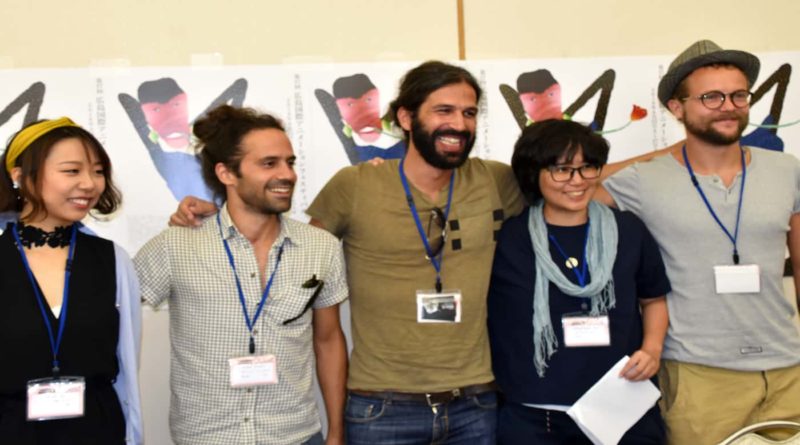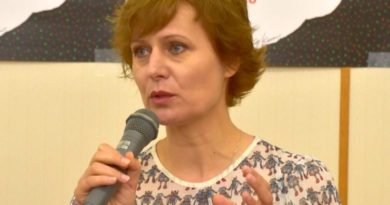Directors Talk Teaching, Collaboration & Inspiration
Stand-out films at the festival for me were the ones with original techniques and story-lines, ones that would stay with me hours after viewing and pop-up again in my mind’s eye at random times even weeks or years later.
George Bowler’s ‘True North’, Michaela Müller’s ‘Airport’ or Anna Eijsbout‘s ‘Hate for Sale’ are comments on our time.
 I wondered if True North was a reflection of BREXIT and director George Bowler said the UK political climate certainly influenced the storyline. “It’s easy to blame others for our own problems,” Bowler says. George Bowler also commented on how nice it was to be in Hiroshima and Japan was a refreshing and intriguing change from his experiences travelling around showing his films in Europe.
I wondered if True North was a reflection of BREXIT and director George Bowler said the UK political climate certainly influenced the storyline. “It’s easy to blame others for our own problems,” Bowler says. George Bowler also commented on how nice it was to be in Hiroshima and Japan was a refreshing and intriguing change from his experiences travelling around showing his films in Europe.
Visited the Hiroshima Peace Memorial Museum today, devastating to see and hear the accounts of the aftermath of the bomb. Inspiring to hear that the focus is on educating people about the horror of nuclear warfare, in the hope of preventing it ever happening again. pic.twitter.com/dn1amhB9WT
— George Bowler (@george_bowler) August 24, 2018
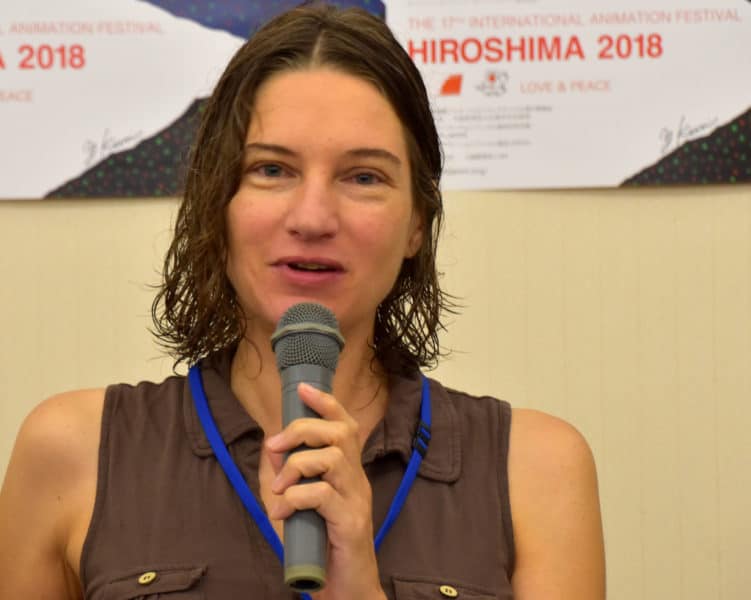 In discussing her film, ‘Airport’, Michaela Müller pointed out in the press conference that an airport is a very different place than bus or train travel as there are inequality issues. Air travel is also unique as it involves a longer, more complex transit process with higher levels of security. Travel is often stressful and unfair to some people unlucky not to hold the right visa, passport or skin color. I felt anxious watching this film and the authentic audio compiled by her sound designer certainly adds a sense of atmospheric reality to watching the moving, cloudy images of passengers. I had an interesting Twitter exchange with Michaela about the possibility of bringing animation films like hers to a wider audience. As this is such a powerful medium, it’d be wonderful if a wider audience could access it.
In discussing her film, ‘Airport’, Michaela Müller pointed out in the press conference that an airport is a very different place than bus or train travel as there are inequality issues. Air travel is also unique as it involves a longer, more complex transit process with higher levels of security. Travel is often stressful and unfair to some people unlucky not to hold the right visa, passport or skin color. I felt anxious watching this film and the authentic audio compiled by her sound designer certainly adds a sense of atmospheric reality to watching the moving, cloudy images of passengers. I had an interesting Twitter exchange with Michaela about the possibility of bringing animation films like hers to a wider audience. As this is such a powerful medium, it’d be wonderful if a wider audience could access it.
Would love to bring it onto these platforms, it is a bit complicated and expensive.
— Michaela Müller (@MizchaelaMuller) August 28, 2018
Airport – Trailer from Michaela Müller on Vimeo.
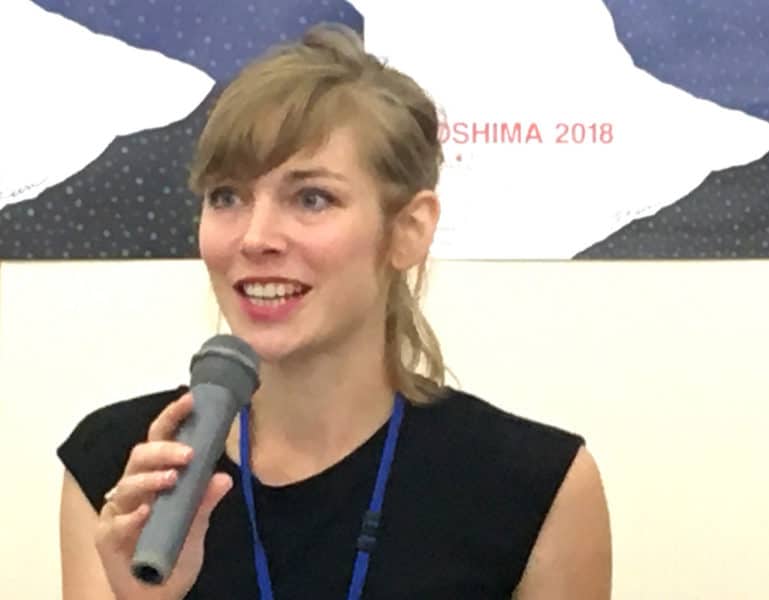 Anna Eijsbouts, director of ‘Hate For Sale’ says she felt deeply passionate, as an artist, about making a film that reflected the political climate in the US. Her film received a special judge’s prize at the festival and was featured in the NYC ‘Visible Poetry Project‘ in 2017 collaborating with poet Neil Gaiman. At the press conference, Eijsbouts described the long list of topics she initially wanted to include in the film, everything from women’s rights, immigration, racism and the environment. The final three-minute film has a lot of those issues to unpack if you watch closely.
Anna Eijsbouts, director of ‘Hate For Sale’ says she felt deeply passionate, as an artist, about making a film that reflected the political climate in the US. Her film received a special judge’s prize at the festival and was featured in the NYC ‘Visible Poetry Project‘ in 2017 collaborating with poet Neil Gaiman. At the press conference, Eijsbouts described the long list of topics she initially wanted to include in the film, everything from women’s rights, immigration, racism and the environment. The final three-minute film has a lot of those issues to unpack if you watch closely.
Hate For Sale from Visible Poetry Project on Vimeo.
It was interesting to me that three of the directors in the same panel were also teachers, so I asked them to speak to the differences of working as an artist vs teacher. Anna Eijsbouts was actually sat on the same table with a previous student, Jorn Leeuwerink (Flower Found!). Eijsbout spoke of the need to find a balance between teaching and inspiring students while still finding time to continue to follow your own passions.
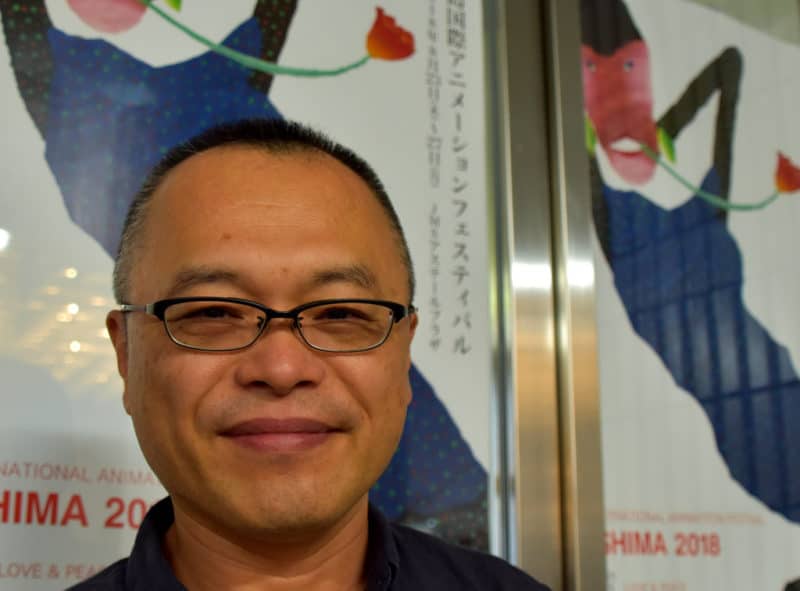 In between viewings, I had a lucky chance encounter with the talented Koji Yamamura, a familiar face at the Hiroshima Animation Festival for many years and the creator of the stunning Atama-Yama and The Doctor. Yamamura’s films had previously won awards and been well received by the audience at this Hiroshima festival in years past. Professor Koji Yamamura talked with pride about his debut at the Hiroshima Animation Festival as a young animation director many years ago and how pleased he was to be at this year’s event in support of two of his students presenting their original films. Yamamura teaches at the Tokyo Geidai Graduate School of Film and New Media and says he still finds time to work on his own projects, and hopes to debut his next film in 2019.
In between viewings, I had a lucky chance encounter with the talented Koji Yamamura, a familiar face at the Hiroshima Animation Festival for many years and the creator of the stunning Atama-Yama and The Doctor. Yamamura’s films had previously won awards and been well received by the audience at this Hiroshima festival in years past. Professor Koji Yamamura talked with pride about his debut at the Hiroshima Animation Festival as a young animation director many years ago and how pleased he was to be at this year’s event in support of two of his students presenting their original films. Yamamura teaches at the Tokyo Geidai Graduate School of Film and New Media and says he still finds time to work on his own projects, and hopes to debut his next film in 2019.
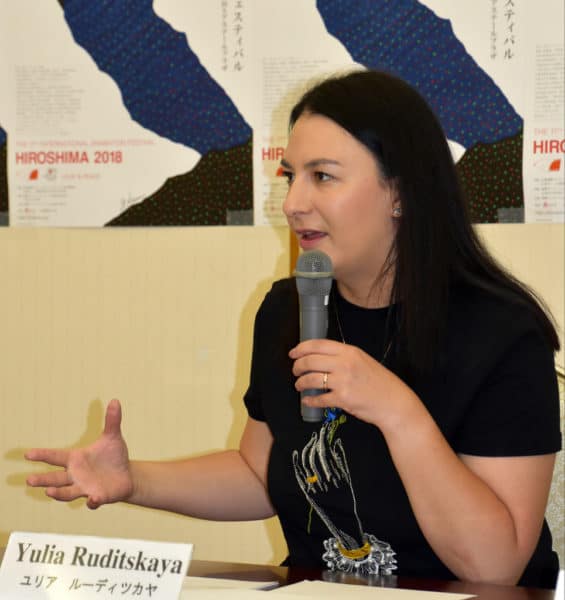 Yulia Ruditskaya, director of “And the Moon Stands Still” spoke of happily playing the teacher’s role- providing knowledge and support to her students. Ruditskaya feels that one of the great things about the animation industry is that everyone is very open to sharing new ideas and techniques. She add that it is a wonderful feeling to “give back” to up-and-coming artists after she has been on the receiving end of so much support over her career.
Yulia Ruditskaya, director of “And the Moon Stands Still” spoke of happily playing the teacher’s role- providing knowledge and support to her students. Ruditskaya feels that one of the great things about the animation industry is that everyone is very open to sharing new ideas and techniques. She add that it is a wonderful feeling to “give back” to up-and-coming artists after she has been on the receiving end of so much support over her career.
And The Moon Stands Still. Trailer from Yulia Ruditskaya on Vimeo.
A final theme that came up many times in presentations, interviews, and discussions this year was collaboration. Vasco Sá claims that his collaboration with David Doutel, on Augur and other projects, is not his own idea, nor Doutel’s, but in fact exists in the third frame of creative collaborative reality.
Bande annonce AUGURE (AGOURO) de David Doutel et Vasco Sá from Zéro de Conduite Productions on Vimeo.
Covering the International Animation Festival it may be taken for granted, but the cross-border relationships many of the Directors discussed was really impressive. On the receiving end of the art, I am similarly impressed by an audience in Hiroshima that enthusiastically accepts animation in so many different styles, featuring different cultures and presented in various languages (often without subtitles). In its foundation, animation as art transcends international borders, language barriers, and the usual cultural hurdles somehow.


